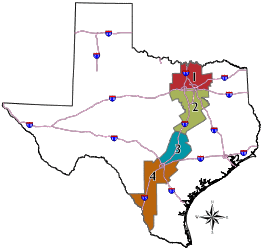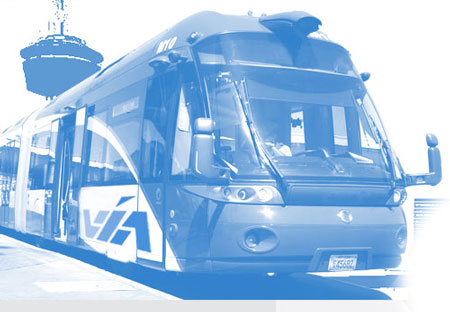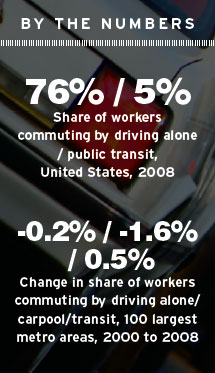Passenger rail Transit: commuter rail light-rail
by Brian
Comments Off on The difference between commuter rail and light rail (redux)
The difference between commuter rail and light rail (redux)
I wrote about this back in 2010, but I feel it needs a revival after seeing yet another story in the local media referring to the once-proposed rail project between San Antonio and Austin as “light rail”. This is incorrect– that project, known as Lone Star Rail or “L-Star”, was to be a commuter rail line, not light rail. It’s not just semantics– there is a big difference in the two. Unfortunately, “light rail” continues to be a buzzword that people around here use without fully understanding what it actually means.
Commuter rail typically uses large, Amtrak-style trains running at fairly high speeds on completely dedicated right-of-way with limited, widely-spaced stops and schedules more oriented to twice-a-day commuters, meaning midday and weekend service is infrequent or even non-existent. This was the type of service planned between San Antonio and Austin. The TRE train between Dallas and Ft. Worth is an example of such service here in Texas.
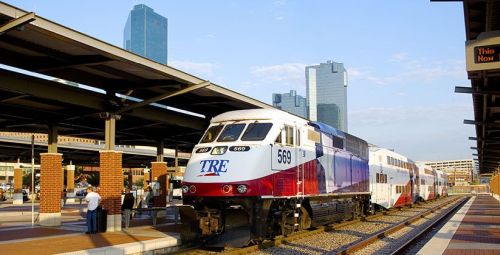
TRE commuter rail
Light rail (LRT), on the other hand, uses smaller, lighter trains (thus the term “light” rail) that more closely resemble large streetcars than they do “regular” trains, run at somewhat slower speeds, often run in dedicated rights-of-way but sometimes run on streets, have rather closely-spaced stations or stops, and have fairly frequent schedules and short headways (time between trains) all day long. This is likely the type of rail service that would be built by VIA in San Antonio if they build a rail line someday although there has been some discussion of building a commuter rail route using the rail line between downtown and the RIM. DART in Dallas and Metro in Houston are examples of LRT in Texas.
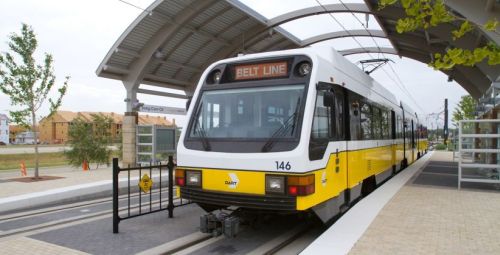
DART light rail
Some other differentiations: Commuter rail trains are much longer than LRT trains and connect the central city to the suburbs while LRT trains typically run mostly within the main urban area (in San Antonio, that would be within Loop 1604.) Also, commuter rail trains are frequently diesel-powered, while LRT trains are almost always electric-powered.
Of course, just to confuse things, there are exceptions, including one just 70 miles up the road (or track as it were): Austin’s MetroRail commuter rail service uses diesel-powered LRT-style trains for what is actually a commuter rail service.
Hopefully this will put an end to the frequent misuse of “light rail” around here to refer to the possible rail service between SA and Austin, although I doubt it.
If you want to learn about the different types of rail systems, Wikipedia has a nice overview here. Denver’s RTD also has a nice write-up. And see “How does commuter rail differ from light rail and heavy rail?”
Passenger rail: streetcars
by Patrick
Comments Off on San Antonio rail controversy gets ugly
San Antonio rail controversy gets ugly
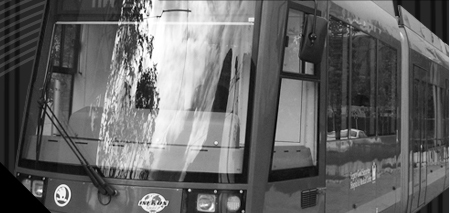
Arguing about light rail is rich with possibilities.
And it’s so easy to galvanize issues: Do we spend hard-earned taxes on transit or roads? Do we revive downtown cores or unclog asphalt arteries to suburbs? What neighborhoods should get the coveted rails or lanes?
The right strategic mix is the sane solution, but agreeing on the right blend can drive decision-makers batty. To wit, the 2000 light-rail election in which VIA Metropolitan Transit was buried first by critics and then by voters. The 2-to-1 defeat silenced local rail advocates for almost a decade.
But now VIA’s latest rail plan – a $180 million project to build a 2.7-mile east-west streetcar line through downtown as well as construct two major transit centers and two suburban bus park-and-rides – seems to be careening around the same pitfalls.
Commuting Gas taxes Oil and gas prices Passenger rail Roads Transit: congress
by Patrick
Comments Off on What’s ahead for gas prices, taxes and roads
What’s ahead for gas prices, taxes and roads
You’ll likely pay more than $3 a gallon for gas next spring.
But you’ll probably keep paying the same 18 cents per gallon federal gas tax — which has lost more than a third of its purchasing power since it was last raised in 1993.
The roads you drive on will get worse. Transit will face ongoing challenges.
That’s what appears in the fog ahead as Republicans take back the U.S. House amid the worst financial crisis since the Great Depression. Feeding voter sentiments are widespread fears about rampant spending and taxing.
Incoming Transportation Committee Chairman John Mica of Florida told reporters last week that the gas tax will go nowhere — which mirror’s President Obama’s position — and that he wants to reconsider recent high-speed rail grants.
But Mica also said he’ll grab hold of a stalled $500 billion six-year transportation reauthorization bill, now a year overdue, and work to push it through. The bill is twice as much as the 2005 law and twice as much as what the gas tax will bring in.
Even so, the massive bill still falls some $150 billion short of just being able to maintain what we have, indicates a report headed by two former U.S. transportation secretaries. And that’s just the federal gap — states and local entities have holes too.
We are facing an “elegant degradation” of our transportation system, the report warns. It will be slow, sure and very costly.
SOURCES:
- Federal gas-price predictions
- St. Augustine Record report
- Reuters report
- New York Times report
- Well Within Reach report
OTHER STUDIES:
Commuting Passenger rail Roads Safety Toll roads Travel: Interstate 35
by Patrick
Comments Off on Big plans for Texas’ worst highway (including tolls and rail)
Big plans for Texas’ worst highway (including tolls and rail)
Planners and pundits have long decried Interstate 35 as Texas’ worst highway.
Notorious traffic backups and numerous crashes on I-35, especially on the stretch from San Antonio to Austin, have spawned big-ticket projects such as the SH 130 tollway and Lone Star commuter rail. Putting two and two together from such thinking eventually led to the now supposedly defunct Trans Texas Corridor.
But more big plans are in the making.
Four committees, each looking at a segment of I-35, are holding public meetings this month to wrap up draft plans on what to do with the highway, its feeders and parallel roads. Billions of dollars worth of projects are eyed, including this for South and Central Texas:
- Convert one I-35 lane each way into toll/carpool lanes from Buda to Georgetown
- Remove tolls and widen SH 130 to six lanes from Seguin to Georgetown
- Build high-speed passenger rail from San Antonio to Dallas
- Build passenger rail from San Antonio to Laredo
- Widen I-35 from San Antonio to Laredo
Commuting Parking Passenger rail Railroads Transit Travel
by Hugh
Comments Off on Passenger rail in Asutin and San Antonio
Passenger rail in Asutin and San Antonio
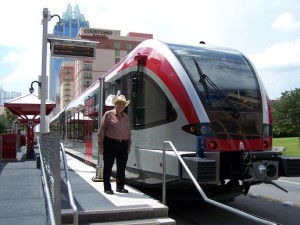
Larry Walsh and the Austin MetroRail
My friend, Larry Walsh, and I finally found the time last Tuesday, July 27, to make a visit to Austin’s new commuter rail line, Capital MetroRail. This is what is hoped to be the first thirty miles of a city wide system. This first section runs from the city center at 4th and Trinity to Leander, a commuter colony way to the north of Austin itself. more »
Del Rio, Uvalde, Crystal City and Carrizo Springs
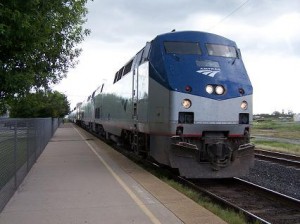 Circumstances, I am happy to say, are obliging me to enlarge my somewhat parochial transportation history research endeavors. Until recently, the furthest I had researched in depth along the old Southern Pacific railroad heading west was Uvalde. I have taken AMTRAK as far as Alpine before and made a couple of trips to Del Rio when I worked for the Union Pacific, but such visits did not involve peeling beneath the surface in any appreciable way. more »
Circumstances, I am happy to say, are obliging me to enlarge my somewhat parochial transportation history research endeavors. Until recently, the furthest I had researched in depth along the old Southern Pacific railroad heading west was Uvalde. I have taken AMTRAK as far as Alpine before and made a couple of trips to Del Rio when I worked for the Union Pacific, but such visits did not involve peeling beneath the surface in any appreciable way. more »
History Passenger rail Railroads Uncategorized
by Hugh
Comments Off on Good things from the Union Pacific in San Antonio
Good things from the Union Pacific in San Antonio
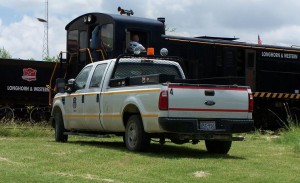
UP at TTM
I am delighted to be able to be able to share a positive story about the Union Pacific railroad, an organization which rarely gets much in the way of good press in these parts. Today the UP came to the rescue at the Texas Transportation Museum here in San Antonio like knights in shining armor. more »
Automobiles History Passenger rail Railroads Roads Travel: Corpus Christi
by Hugh
Comments Off on Going to Corpus Christi, then and now
Going to Corpus Christi, then and now
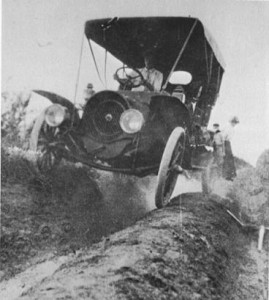
The main road to Corpus Christi, circa 1910
A wee trip to the coast, a fine way to spend a hot and hazy Sunday. While I’m still stuck in bachelor mode – decide to go, jump in the car and away – my wife needs, shall, we say, a little more, um, preparation. Providing my ipod is loaded and charged, I am sorted. She, on the other hand, loaded our vehicle like the old days when we were carrying a baby. Blankets, pillows, books, a lap top for heaven’s sake, towels, changes of clothes, the works. more »
See how San Antonio plans to make its buses perform like light rail
Can buses look and operate more like light rail?
VIA Metropolitan Transit officials think so. And now the public can peek under the hood of a plan to spend $57 million to speed up bus travel and make trips more comfortable along Fredericksburg Road.
The agency will hold three public meetings over two weeks to explain the latest on an environmental study:
Monday, May 24
6 p.m.
Jefferson High School cafeteria
723 Donaldson
Thursday, May 27
1:30 p.m.
Norris Conference Center
Wonderland of the Americas Mall
4522 Fredericksburg Road, Suite A100
Thursday, May 27
6 p.m.
Norris Conference Center
Wonderland of the Americas Mall
4522 Fredericksburg Road, Suite A100
The study says buses could scoot along 30 percent faster on nine miles between downtown and the Medical Center, two prime job centers anchoring one of VIA’s busiest routes. More than a fourth of the area’s 79,000 residents depend on transit.
The cost for bus rapid transit, as it’s called, includes traffic signal controls to give buses more green time, faster ticketing, sidewalk-level boarding, two roomy transit centers and eight enhanced stations. The hope is that developers will create walkable, mixed-used hubs around the stops.
The cost does not include dedicated bus lanes on part of the route, as proposed in previous plans that put the tab at around $100 million.
Construction is supposed to start this year, with service starting in late 2012.
LINKS:
Commuting Passenger rail Transit
by Patrick
Comments Off on One in four commuters are part of this growing national trend
One in four commuters are part of this growing national trend
One in four big-city commuters walk to work, ride bicycles, use transit or at least share car rides with other workers, a new study says. A good number even stay home to work.
In other words, 24 percent of Americans in the 100 largest metro areas don’t drive solo to work, according to “The State of Metropolitan America,” a report released this week by the Brookings Institution.
And though a whopping three-fourths still drive alone, that portion has been shrinking, says the report’s 12-page commuting chapter.
From 2000 to 2008:
TRANSIT RIDERSHIP: went up for the first time in 40 years, reaching 5 percent in 2008, though that’s still shy of 5.1 percent from 1990.
DRIVING SOLO: slid down slightly, mostly in 2007 to 2008, the first year of the Great Recession and a time of shockingly high gas prices. Austin led the nation’s biggest cities with a 3.6 percent drop.
CARPOOLING: dropped to 11 percent, less than the 12 percent from 1970.
TWO-WHEELING: by bicycle and motorcycle rose slightly, to 1.7 percent.
WALKING: declined to 2.8 percent, down from 7.4 percent in 1970.
TELECOMMUTING: jumped to 4.1 percent.
The report breaks down the trends by demographics and geography and mentions some other notable Texas numbers:
El Paso is third in the U.S. for a 3.2 percent increase in solo driving and second for a 5.2 percent decrease in carpooling; McAllen ranks in the top five for both the percentage of commuters who carpool and those who quit carpooling; and Houston is fifth for loss of transit share.
LINKS:

